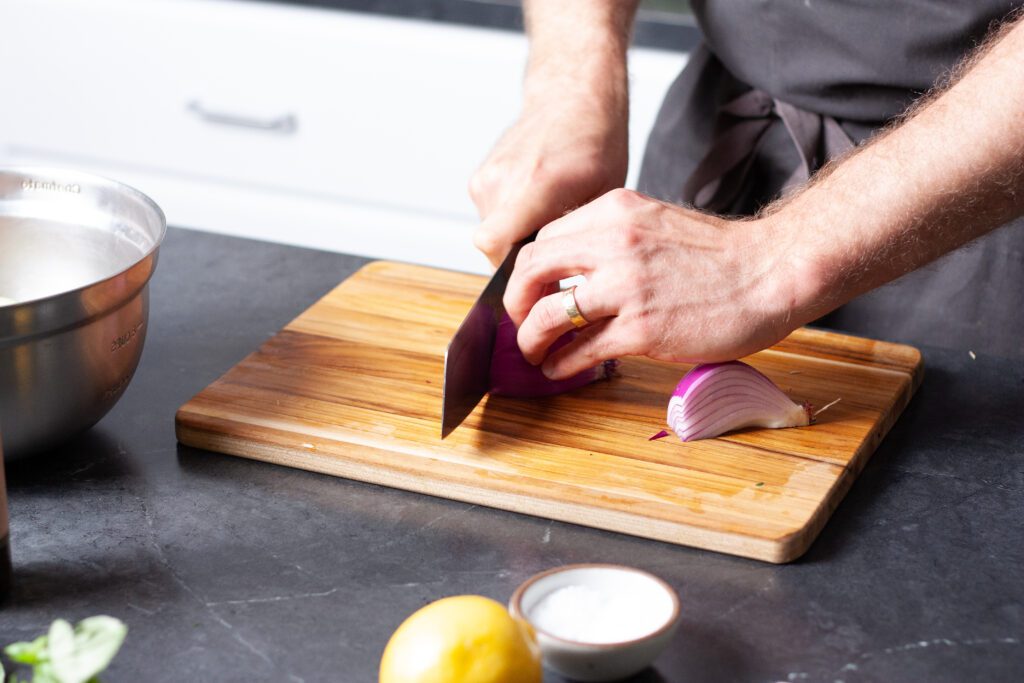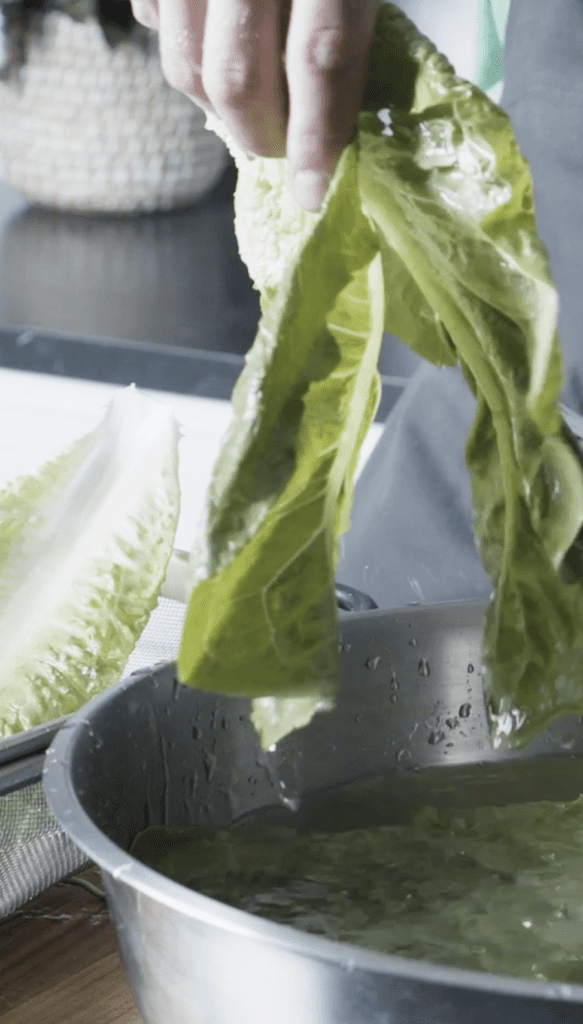Getting a Fresh Harvest delivery can feel like Christmas morning. But for many of us, a box full of produce delivered mid-week can also be intimidating. “How do I set myself up for quick and easy cooking? What prep can I do right away to save time later?” To help simplify this process, Atlanta Chef Ollie Honderd breaks down his Fresh Harvest unboxing process into three stations: cutting, washing, and roasting. Similar to his experience in professional kitchens, this happens each week as soon as he gets his delivery. Read more to learn Ollie’s tips and tricks for each station or watch the video below.
Station # 1: Veggie Cutting
According to Chef Ollie, when it comes to prep, pre chopping your veggies will give you a huge leg up when it comes to cooking later in the week. Think about how much easier it is to cook a meal when the carrots and onions are already chopped or diced! Ollie suggests that even if you’re not sure what you’ll use something for, it’s worth going ahead and cutting it up into a versatile size that you can use in a variety of recipes. This station is ideal for vegetables like garlic, peppers, onions, carrots, celery, broccoli, and pretty much any non-leafy green that you don’t plan to roast whole.
What you’ll need for this station:
- Cutting board: be sure to secure it to a flat surface. Pro tip: a slightly damp towel placed under a cutting board will keep it from moving.
- Knife: whether you go with a paring knife or chef’s knife, makes sure it’s sharp!
- Storage containers: for quick and easy storage of your prepped veggies
- Compost bowl or bin: because the planet (duh!)
- Towel or bowl scraper: for easy cutting board cleanup in between veg
Station # 2: Greens & Herbs Washing
Though many farmers take the time to wash their greens before delivering, it’s still a good idea to process them yourself. We’d advise this step even when purchasing from a big box grocery store. Greens have many crevices and cracks for dirt and bugs to hide out. Chef Ollie says this step is crucial during his weekly prep for consolidating his greens and herbs into one big container of mixed greens and herbs that he can pull from throughout the week. This station is ideal for lettuce, endives, chicories, root tops, herbs, and anything leafy.
Here’s what you’ll need for this station:
- Wash basin or sink: be sure the space is large enough to wash your largest leaves and in close proximity to your sieve or salad spinner
- Sieve: this is a handy place to get excess water off your greens before spinning them
- Salad spinner: dry those greens quickly and easily with this useful tool
- Storage container: make sure it’s sealable and large enough to hold all your dried greens and herbs before storing in the ‘fridge
Station # 3: Roasting
Pre-roasting vegetables is a HUGE timesaver! This station is great for any produce you plan to roast whole, like potatoes, sweet potatoes, squash varieties, and all manner of roots. The first step in this process is always to preheat your oven. Choose a temperature that fits your roasting and time preferences, and remember you can always open up the oven to see if your vegetables are ready. Feel free to mix and match veggie types on the same sheet pan, but make sure they aren’t too crowded together.
What you’ll need for this station:
- Large bowl: for tossing your raw veggies
- Olive oil & salt: for coating vegetables before cooking
- Sheet pan: for roasting
- Aluminum foil or parchment paper: to line pan for easy cleanup
- Oven: because, well…
Hopefully this simple station-based breakdown will make your prep process a little less intimidating and motivate you to cook more this year. There’s no perfect way to do it, just keep in mind that simply having a plan often makes all the difference.



